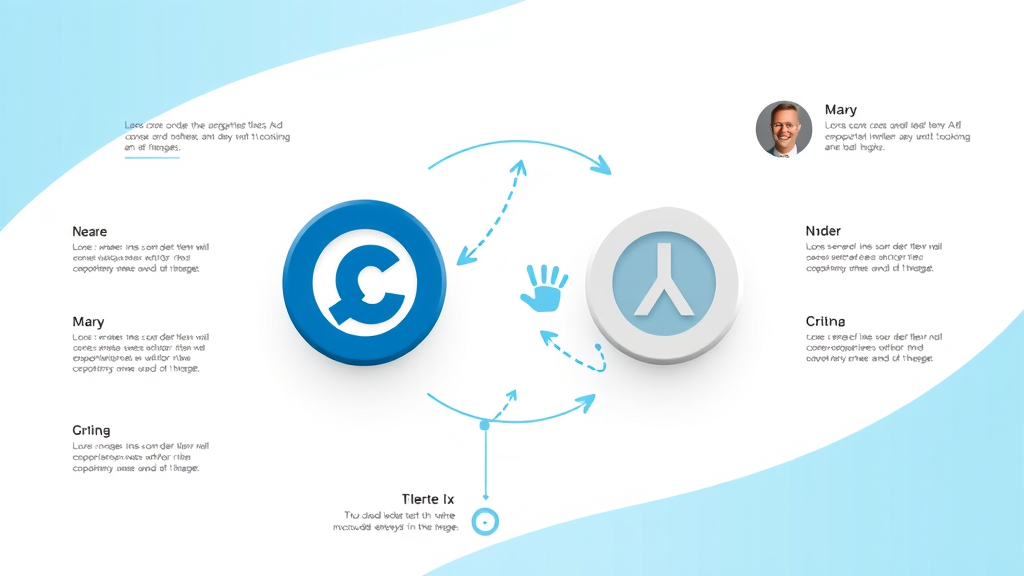Did you know that up to 90% of mergers and acquisitions fail to achieve their intended results? Uncover what sets the successful 10% apart.
Are you ready to discover why most mergers and acquisitions flounder—and how to be among the winners? The high-stakes world of corporate deals is full of surprises, pitfalls, and legendary success stories. In this comprehensive guide, you’ll gain practical tools and groundbreaking insights from industry leaders, investment bank experts, and private equity strategists. Whether you’re exploring your next big move or seeking to understand the mechanics of a flawless deal, this article equips you with the secrets, strategies, and trends transforming the future of business growth.
- Understand the essential drivers behind successful mergers and acquisitions
- Learn about the crucial role of investment banks and private equity
- Explore the strategies, challenges, and trends shaping effective deals
- Gain access to real-world examples, expert quotes, and practical resources

Unlocking the Secrets of Mergers and Acquisitions: What the Numbers Reveal
When it comes to mergers and acquisitions (M&A), the numbers tell a sobering story: up to 90% of deals underperform or outright fail. What separates the successful 10% is a mix of disciplined strategy, cultural alignment, and world-class integration plans led by astute investment banks and seasoned private equity firms. Understanding the underlying drivers and risks is essential for both acquiring companies and target companies. For instance, market share expansion, increased cash flow, and access to new customer bases are common goals, but unless these are coupled with robust due diligence, expert negotiation, and well-planned integration, value can quickly evaporate.
Many high-profile M&A transactions falter due to overestimation of synergies, underappreciation of the complexities in blending operations, or misalignment in management visions. Leading private equity firms and investment banks have honed processes—such as comprehensive due diligence and rigorous valuation methods—to identify pitfalls early. In the United States alone, regulatory pressures and fierce competition add to the challenge. Real-world success stories typically involve acquiring firms that set clear acquisition criteria, maintain open communication, and utilize advanced financial modeling techniques to structure the deal for maximum advantage.
Demystifying Mergers and Acquisitions: Core Concepts, Process, and Definitions
What Is Meant by Mergers and Acquisitions? An In-Depth Overview
Mergers and acquisitions refer to transactions in which companies—public companies, private companies, or even shell companies—combine to form new entities or wholly absorb one another. A merger typically occurs when two organizations of similar size join forces to create a new company, maximizing their consolidated market share, resources, and competitive reach. In contrast, an acquisition occurs when a larger acquiring company buys a smaller target firm, leading to operational control and potential integration of assets and liabilities. Both concepts are central to business operations and long-term growth strategies.
In practice, mergers and acquisitions can take on various forms: friendly or hostile takeovers, horizontal integration of competitors, vertical mergers combining supply chain partners, or even reverse mergers involving private companies and publicly listed entities. Each approach is shaped by the goals of the acquiring firm—expanding customer base, acquiring intellectual property, or improving supply chain efficiency. Understanding the distinctions helps companies and investors navigate this complex landscape with informed, deliberate steps.

Mergers and Acquisitions Lifecycles: Stages, Types, and Key Stakeholders
Every merger or acquisition follows a defined lifecycle that includes several distinct stages. These typically encompass deal sourcing, due diligence, negotiation and bidding, and finally, integration. Key stakeholders include investment banks, private equity sponsors, legal and finance advisers, the board of directors, and, of course, the management teams of both acquiring and target companies. Each participant brings specialized expertise to the table, ensuring thorough evaluation and smooth execution.
Deal sourcing focuses on identifying high-potential target companies and conducting market analysis—areas where private equity and investment banks excel. The due diligence phase is critical for analyzing cash flows, evaluating operational synergies, and exposing hidden risks. Once the groundwork is set, negotiation determines not just the purchase price, but also the deal structure (e.g., asset purchase, stock, tender offer). Finally, integration efforts aim to realize the promised value—avoiding disruption, talent loss, or misaligned business cultures.
| Stage | Key Participants | Primary Activities | Critical Risks |
|---|---|---|---|
| Deal Sourcing | Private Equity, Investment Bank | Target Identification, Market Analysis | Misalignment, Overvaluation |
| Due Diligence | Investment Bank, Legal, Finance | Financial Audit, Operational Review | Hidden Liabilities, Cultural Clashes |
| Negotiation & Bidding | Buyer, Seller, Investment Bank | Valuation, Offer Structure | Deal Breakdown, Price War |
| Integration | Acquirer, Targets, Consulting | Systems, Culture, People | Disruption, Talent Loss |

As you navigate the complexities of each M&A stage, it's important to recognize how regulatory developments can directly impact deal structures and outcomes. For example, recent high-profile cases such as the FTC's review of the Exxon-Pioneer merger highlight the evolving landscape of merger restrictions and compliance. To see how these regulatory shifts may affect your approach, explore the FTC’s public comment process on Exxon-Pioneer merger conditions and its implications for dealmakers.
The Strategic Edge: Private Equity and Investment Bank Roles in Mergers and Acquisitions
Private Equity Influence: Driving Value Creation in Mergers and Acquisitions
Private equity has become a driving force in modern mergers and acquisitions , known for its focus on value creation and operational efficiency. Private equity firms source deals where there is potential to unlock cash flows through cost reductions, strategic partnerships, or new market entries. Their deep expertise allows these investors to identify underperforming target companies and implement turnaround plans, often coordinating with investment banks to structure winning deals.
These firms typically employ leveraged buyouts and other innovative financing tactics to maximize return on investment while minimizing risk. With so much at stake, private equity sponsors pay close attention to business operations, asset purchase strategies, and the integration of overlapping entities. By aligning interests across shareholders of the acquiring and target firm, private equity not only drives increased purchase price multiples but also fosters long-term growth and sustainable market share gains.
Investment Banks: Guiding Mergers and Acquisitions from Negotiation to Close
Investment banks are indispensable throughout the merger or acquisition process. Their professionals advise both buyers and sellers on company valuation, tender offer tactics, and financing structures. Whether the deal involves public companies, private company targets, or complex international transactions, investment banks bring superior analytical expertise and negotiation prowess. They help devise bidding strategies, prepare confidential information memoranda, and manage regulatory hurdles.
During due diligence, investment banks work closely with legal teams to analyze cash flows, assets and liabilities, and potential synergies or operational hurdles. Their insight is invaluable in drafting transaction structures—asset purchase, stock swaps, or hybrid solutions—that best protect the interests of acquiring firms. A successful M&A outcome often hinges on the guidance and risk mitigation capabilities provided by these financial intermediaries.

Deal Structures and Methods: Tender Offers, Cash Flow Analysis, and Creative Approaches
Tender Offer Tactics in Mergers and Acquisitions
The tender offer is a popular method for acquiring companies to gain swift control of a target company, particularly in publicly listed entities. In this scenario, the acquiring firm bypasses the board of directors and makes a direct offer to the shareholders of the target company, usually at a significant premium to the current market price. This approach is particularly effective in competitive or hostile takeover situations where a friendly deal cannot be negotiated.
However, tender offers are not without risk. If the offer is perceived as undervaluing the target firm or the market expects a bidding war, shareholders might hold out for better terms, possibly escalating the purchase price. Investment banks play a critical role in structuring and communicating tender offers to balance speed, legal compliance, and stakeholder engagement. Ultimately, the success of a tender offer in mergers and acquisitions depends on careful market analysis, regulatory approval, and precise timing.
Cash Flow Considerations in Successful Mergers and Acquisitions
Cash flow analysis is at the heart of any successful merger or acquisition . Both the acquiring company and the target company must thoroughly assess short-term and long-term cash flows to forecast the merged entity’s financial stability. For example, the acquiring firm must project how the deal will impact its own ability to service debt, maintain operations, and invest in growth. Target companies, on the other hand, are evaluated for the sustainability of their own cash flows and how these align with the acquiring company’s objectives.
Potential risks include overestimating cost synergies, underestimating capital expenditure needs, and unforeseen integration costs. Investment banks and private equity professionals use multiple valuation methods to create realistic cash flow scenarios, ensuring the purchase price reflects not only assets and liabilities but also future earning power. A clear, data-driven approach to cash flow is what separates thriving combined entities from those that struggle post-deal.

Innovative Deal Structures: Private Equity, Leveraged Buyouts, and Creative Financing
Innovation in deal structuring helps both buyers and sellers navigate volatile markets and maximize value in mergers and acquisitions . Private equity sponsors often structure leveraged buyouts using a mix of debt and equity to acquire target firms with minimal upfront investment. Hybrid transaction formats, including asset purchases combined with contingent payouts or earnouts, allow acquiring companies to hedge risk while aligning incentives with the original owners.
Creative financing structures—such as joint ventures, strategic alliances, or even reverse mergers—are common. These approaches benefit acquirers seeking to access new technologies, expand their customer base, or restructure business operations without the complexity of a full takeover. Successful deals typically employ a flexible, tailored approach designed by experienced investment banks and legal advisors, ensuring regulatory compliance and a smooth transition for all parties.

Why Do Up To 90% of Mergers and Acquisitions Fail? Lessons from History
"Achieving M&A success requires more than financial engineering—it demands cultural alignment, vision, and relentless execution."
The surprisingly high failure rate of mergers and acquisitions is often attributed to factors beyond just financial performance. Poor integration planning, cultural mismatches between acquiring company and target firm, lack of a shared vision, and mismanaged communication can erode value quickly. Many corporate leaders underestimate the importance of employee engagement and fail to identify risks tied to business operations and assets and liabilities.
Historical analysis reveals that for every mega deal that transforms an industry, there are many high-profile flops. For instance, overzealous expansion efforts may lead an acquiring firm to overpay, while neglecting the significance of integrating processes, systems, and supply chains. The most successful deals prioritize cultural diligence alongside financial audits, fostering alignment across leadership teams and stakeholders.
Secrets to Winning Mergers and Acquisitions: Best Practices for Each Stage
- Define clear acquisition criteria
- Conduct comprehensive due diligence focused on both numbers and culture
- Leverage private equity and investment bank expertise to assess deal structure nuances
- Prepare robust integration plans prior to deal closure
- Prioritize transparency with all internal and external stakeholders
Winning at mergers and acquisitions is about process as much as strategy. Successful acquirers start with a precise target profile, whether that means boosting market share, acquiring intellectual property, or gaining access to new customer bases. Comprehensive due diligence investigates both quantitative and qualitative dimensions—financial statements, cash flow health, organizational culture, and regulatory risks. Investment banks and private equity firms bring technical acumen to structuring the deal, ensuring every asset purchase, tender offer, and synergy is optimally aligned with long-term objectives.
But preparation does not stop at closing. Robust integration plans covering IT, HR, supply chain, and cultural merging are drafted preemptively, with flexibility to adjust as realities unfold. Maintaining strong, transparent communication with external investors, employees, and regulatory bodies cements trust and smooths the transition.
Checklist: The Ultimate Due Diligence Guide for Mergers and Acquisitions
- Review financial statements for cash flow health
- Assess legal and regulatory risks
- Evaluate synergies and overlapping operations
- Plan IT, HR, and cultural integration ahead

Current Trends and the Future Outlook for Mergers and Acquisitions: Market Forces, Sectors, and Mega Deals
In today’s landscape, mergers and acquisitions are influenced by accelerating digital transformation, changing economic cycles, and shifting regulatory frameworks, especially in the United States and other major markets. Mega deals have recently dominated headlines, with sectors like technology, energy, media, and chemicals playing host to blockbuster transactions. Investment banks and private equity partners are increasingly drawn to industries ripe for consolidation or disruption, using advanced analytics and creative financing to structure deals with maximum upside.
Looking ahead, trends such as cross-border transactions, ESG (Environmental, Social, and Governance) impact, and the rise of digital platforms are reshaping strategies. Mega mergers like Disney-Fox and Dow-DuPont demonstrate the transformative potential—and the high stakes—of multi-billion-dollar integrations. For professionals and companies looking to stay ahead, continuous investment in talent, technology, and risk management is essential.
| Mega Deal | Value ($B) | Year | Sector | Key Players |
|---|---|---|---|---|
| Disney-Fox | 71 | 2019 | Media | Disney, Fox |
| Occidental-Anadarko | 57 | 2019 | Energy | Occidental, Anadarko |
| Dow-DuPont | 73 | 2017 | Chemicals | Dow, DuPont |
| Dell-EMC | 67 | 2016 | Technology | Dell, EMC |

People Also Ask: Mergers and Acquisitions Essential Questions
What is meant by mergers and acquisitions?
Mergers and acquisitions (M&A) describe the process where two companies combine to form a new entity (merger) or where one company acquires another (acquisition). These transactions can involve public or private companies, and are commonly used for gaining market share, diversifying operations, or enhancing business capabilities. In most M&A scenarios, the acquiring firm negotiates purchase price, structure, and integration plans to maximize value for both shareholders and customers.
Is mergers and acquisitions a good job?
Careers in mergers and acquisitions are considered highly rewarding, offering exposure to complex deals, strategic decision-making, and fast-paced work environments. Professionals in this space, especially those at investment banks or private equity firms, play critical roles in assessing target companies, structuring deals, and driving long-term growth. It is a demanding yet dynamic field with significant opportunities for learning, leadership, and financial reward.
Why do up to 90% of mergers and acquisitions fail?
The high failure rate in M&A is mainly attributed to poor planning, insufficient due diligence, and underestimated cultural and operational challenges. Acquiring companies often focus too narrowly on financial metrics, overlooking crucial elements like integration planning, stakeholder communication, and alignment of core business operations. Success hinges on holistic assessment—including cultural fit and strategic direction—not just valuation and cash flows.
What is the largest M&A company?
While several investment banks and private equity giants dominate the M&A landscape, entities like JPMorgan Chase, Goldman Sachs, and Morgan Stanley are frequently cited as the largest M&A advisors by deal value and volume. In terms of completed deals, mega mergers such as the Dow-DuPont and Disney-Fox combinations—structured and advised by top-tier firms—rank among the most significant in global business history.
Frequently Asked Questions for Winning at Mergers and Acquisitions
-
What are the biggest regulatory challenges in mergers and acquisitions?
Regulatory hurdles differ by industry and region, ranging from antitrust clearances to sector-specific compliance mandates. In the United States and abroad, early engagement with legal counsel and regulatory bodies helps acquirers anticipate and address obstacles proactively. -
How can cultural differences derail a merger or acquisition?
Unmatched company cultures often result in staff turnover, stalled integration, and loss of operational efficiency. Early assessments and planned cultural integration initiatives are vital to ensuring alignment and employee buy-in during post-merger transitions. -
When is a tender offer the best approach?
Tender offers are most effective when a quick transaction is necessary, or when the board of the target company is unlikely to approve a direct sale. They are often employed in publicly listed companies to gain a controlling stake efficiently. -
What factors influence M&A success rates?
Factors include thorough due diligence, strong leadership, clear strategic objectives, robust integration planning, and transparent stakeholder communication. Leveraging expertise from investment banks and private equity firms also increases the likelihood of achieving deal targets.
Take the Next Step: Leverage These Secrets to Succeed in Mergers and Acquisitions
Apply these strategies, prioritize cultural fit, engage expert partners, and approach every deal with rigorous, step-by-step planning for consistent M&A success.
If you’re looking to put these M&A strategies into action, having the right experts by your side can make all the difference. Whether you’re preparing to buy, sell, or navigate a complex transaction, connecting with seasoned business brokers can accelerate your journey and help you avoid costly missteps. Discover how to find trusted professionals who specialize in fast, effective deal-making by visiting our guide on identifying the best business brokers for your next move . Take the next step with confidence and unlock new opportunities in the world of mergers and acquisitions.
 Add Row
Add Row  Add
Add 




Write A Comment